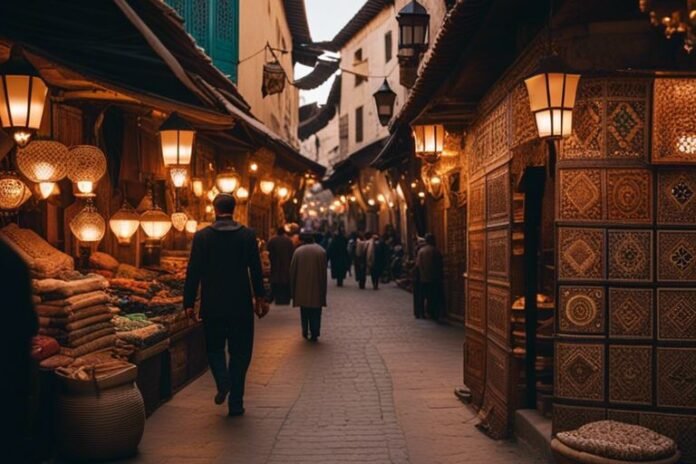Over the centuries, Fes El-Bali has stood as a testament to a rich history and a vibrant culture. This UNESCO World Heritage site in Fes, Morocco, is a maze of narrow lanes, bustling souks, and ancient buildings that showcase the city’s medieval past. If you’re curious about the origins of this fascinating place, you might be wondering: When was Fes El-Bali built? Let’s dive into the history of this remarkable destination to uncover the answer.
Advertisement
If you want to explore Fes El-Bali and immerse yourself in its historical charm, check out this comprehensive guide to Fes el-Bali, Fes, to make the most of your visit.
Key Takeaways:
- Fes El-Bali is the oldest walled part of Fes, Morocco.
- Fes El-Bali was built in the 8th century and has been continuously inhabited.
- The construction of Fes El-Bali was started under the rule of Idris I.
- It was further developed during the reign of his son, Idris II.
- Fes El-Bali is a UNESCO World Heritage Site known for its medieval architecture and narrow alleyways.
- This historic city is famous for the University of Al Quaraouiyine, considered the world’s oldest continuously operating degree-granting university.
- Fes El-Bali continues to be an essential cultural and spiritual center in Morocco.
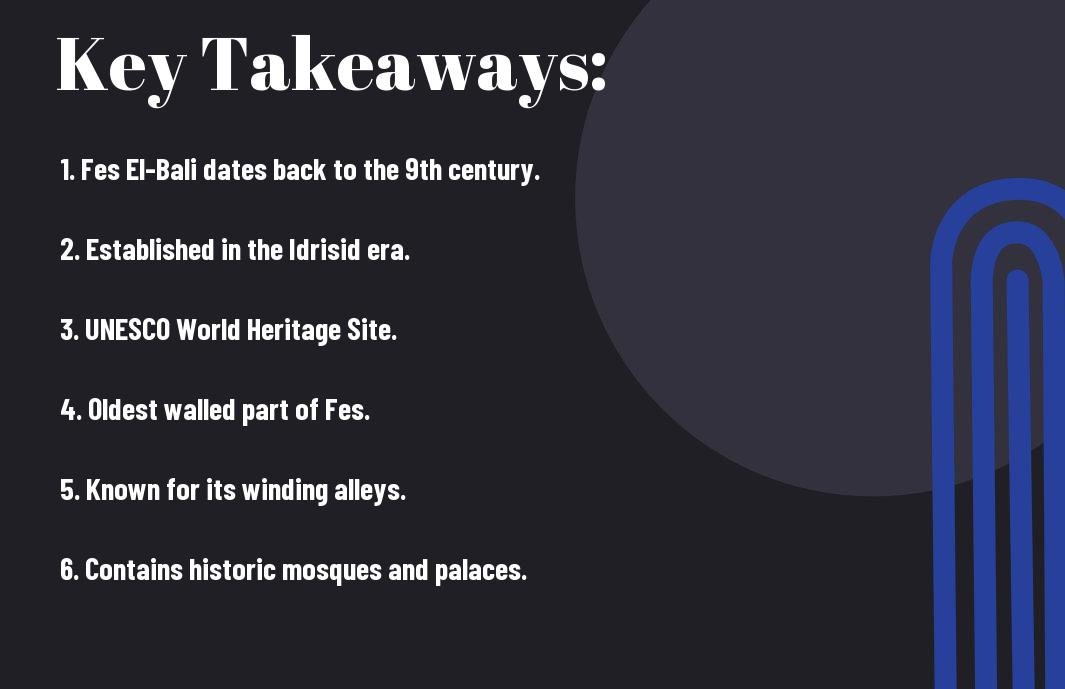
The Roots of Fes El Bali
The Founding of Fes El Bali
One of Morocco’s most ancient and well-preserved cities, Fes El-Bali, also known as Fes (or Fez) Medina, holds a rich history dating back over a thousand years. This historic city was founded in the 9th century by the ruler Idris I, the founder of the Idrisid dynasty, making it one of the world’s oldest continually inhabited medieval towns.
To this day, Fes El-Bali remains a testament to the architectural and cultural marvels of the past. The city was meticulously planned, with intricate narrow streets and alleys, bustling marketplaces, and splendid architectural designs that reflect the diverse influences of different dynasties that ruled the region.
Historical Context in the 8th-9th Century AD
Founding Fes El-Bali in the 8th century, the Idrisid dynasty played a crucial role in shaping the city’s early development. The dynasty, named after Idris I, a descendant of Prophet Muhammad, sought to establish a center for learning and trade. This vision laid the foundation for the city to become a knowledge, culture, and commerce hub.
The 8th and 9th centuries were marked by a period of expansion and prosperity under the reign of the Idrisids. Fes El-Bali flourished as a center of Islamic civilization, attracting scholars, artisans, and merchants across the region. The city’s strategic location along trade routes contributed to its economic growth and cultural richness during this era.
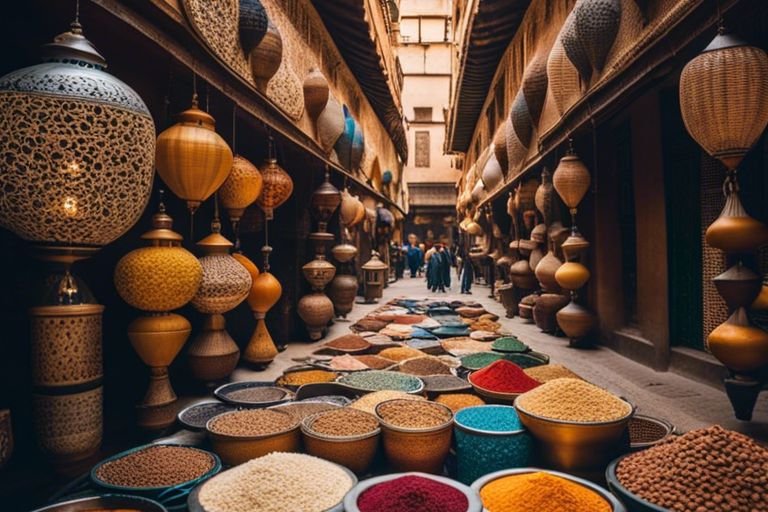
Architectural Marvels of Fes El Bali
The Medieval Urban Fabric
Now, let’s explore the architectural marvels that grace the streets of Fes El-Bali. One of the striking features of this ancient city is its well-preserved medieval urban fabric. The labyrinthine layout of narrow alleyways, intricate archways, and traditional Moroccan courtyard houses known as riads all contribute to the unique charm of Fes El-Bali.
The seamless blend of Islamic and Andalusian architectural styles is evident in the ornate tilework, carved plaster, and intricate woodwork throughout the city. The historic buildings and structures in Fes El-Bali serve as a living testament to the city’s rich cultural heritage and architectural prowess.
Key Monuments and Their Significance
Their significance lies in that these monuments have stood the test of time, bearing witness to centuries of history and craftsmanship. The iconic Al-Qarawiyyin Mosque, founded in 859 AD, is not only one of the oldest universities in the world but also a prime example of Moroccan architectural splendor. The Bou Inania Madrasa, with its stunning courtyard and detailed stucco decoration, is another architectural masterpiece that showcases the intricate craftsmanship of the artisans of that era.
The historical significance of these monuments extends beyond their architectural beauty. They have played pivotal roles in shaping the religious, educational, and cultural landscapes of Fes El-Bali. Visitors to these sites not only marvel at the intricate details of the architecture but also gain a deeper understanding of the city’s storied past.
A visit to Fes El-Bali is a journey through time and an exploration of the enduring legacy of Moroccan architectural excellence. As you wander through the alleyways and squares, take a moment to appreciate the craftsmanship and creativity that have created these architectural marvels that continue to captivate visitors worldwide.
The Cultural Mosaic of Fes
Now, let’s research the rich cultural tapestry that defines Fes El-Bali. This ancient city has been shaped by many influences, creating a truly unique and diverse cultural landscape.
Influence of Various Dynasties
To understand the cultural richness of Fes El-Bali, one must recognize the significant impact of various dynasties that have ruled over the city. From the Idrissids to the Almoravids and the Merenids, each dynasty has left its mark on Fes’s architecture, art, and traditions. The intricate tile work, beautiful mosaics, and grand structures bear witness to these ruling powers’ artistic and architectural prowess.
Throughout history, Fes has been a hub of cultural exchange, welcoming influences from Arab, Berber, and Andalusian cultures. This blending of different artistic styles and traditions has resulted in the mesmerizing beauty that Fes El-Bali is known for today. The city’s medina is a testament to the harmonious coexistence of diverse cultural elements.
The Melting Pot of Religions and Ethnicities
One of the most striking aspects of Fes El-Bali is its status as a melting pot of religions and ethnicities. Christians, Muslims, and Jews have all called this city home, coexisting and contributing to the vibrant cultural scene. The Jewish quarter, known as the Mellah, is a testament to the long Jewish presence in Fes, adding to the city’s multilayered identity.
Dynasties have come and gone, but the enduring spirit of Fes El-Bali lies in its ability to embrace diversity and celebrate the rich tapestry of traditions that have been woven together to create this cultural mosaic. This dynamic fusion of influences makes Fes El-Bali a truly unforgettable destination for travelers seeking to immerse themselves in a world where history, art, and culture converge.
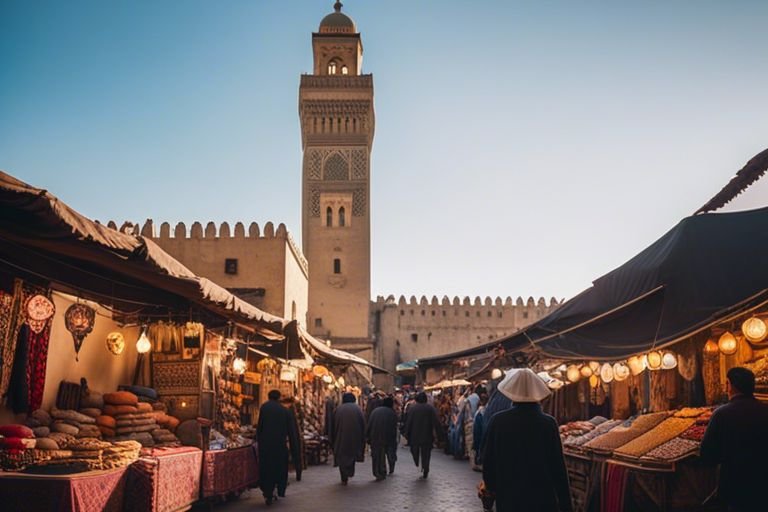
Social and Economic Structures
To learn more about the social and economic structures of Fes El-Bali, you can visit the Medina of Fez UNESCO World Heritage page.
Traditional Crafts and Industries
On exploring the ancient streets of Fes El-Bali, visitors can witness the rich craftsmanship tradition passed down through generations. Artisans in the medina continue to practice traditional crafts such as leatherworking, pottery, and carpet weaving, keeping these age-old industries alive and thriving.
The intricate designs and expert craftsmanship of items produced in Fes El-Bali are sought locally and internationally, showcasing the skilled labor and artistic talent that defines the medina’s cultural heritage.
Markets and Trade in Fes El-Bali
The markets in Fes El-Bali are vibrant hubs of activity where locals and tourists alike can experience the bustling trade that has been a cornerstone of the medina’s economy for centuries. The souks and bazaars offer various goods, from spices and textiles to handcrafted and traditional wares.
The bustling atmosphere of the markets in Fes El-Bali provides a glimpse into the dynamic commercial life of the medina, where bartering and negotiations are still standard practices, adding to the authentic cultural experience of shopping in this historic setting.
Crafts and trade have been integral parts of the social and economic fabric of Fes El-Bali, shaping both the daily life and the historical significance of the medina. These traditional practices not only sustain local livelihoods but also contribute to the preservation of the unique cultural identity of this UNESCO World Heritage site.
Preservation Efforts and Challenges
Despite its age and historical significance, Fes El-Bali has faced several challenges over the years regarding preservation. Efforts to protect and conserve this ancient medina have been ongoing, but they have not been without their obstacles.
UNESCO World Heritage Status
Fes El-Bali was designated a UNESCO World Heritage site in 1981 for its cultural importance and well-preserved medieval architecture. This recognition has helped draw attention to the need for conservation and has provided funding for restoration projects. However, the increasing population and urban development in the area have posed challenges to maintaining the authenticity of the medina.
UNESCO has been working closely with local authorities and preservation groups to address these issues and ensure that Fes El-Bali retains its unique character and historical significance for future generations.
Deterioration and Modernizations Impacting Fes El-Bali
On top of the challenges posed by urban development, Fes El-Bali has also been affected by deterioration due to neglect and the introduction of modern amenities. While some renovations have been necessary to ensure the safety and comfort of residents and visitors, a delicate balance between modernization and preservation must be maintained.
The delicate nature of the historic buildings and infrastructure in Fes El-Bali requires careful consideration and expertise when implementing any changes to prevent irreversible damage to this cultural treasure.
Fes El-Bali in Literature and Arts
For centuries, Fes El-Bali has captivated the minds of writers, poets, and artists with its timeless charm and rich history. The medina’s labyrinthine streets, bustling souks, and ancient architecture have inspired countless creative works, making it a significant cultural landmark in literature and arts.
Literary References Through The Ages
References to Fes El-Bali can be found in various literary works dating back to medieval times. Renowned writers such as Ibn Battuta and Leo Africanus wrote vivid accounts of their experiences in the city, showcasing the beauty and mystique of Fes El-Bali to a global audience. These early writings served as a window into the vibrant cultural tapestry of the medina, shaping the perceptions of generations to come.
Throughout history, Fes El-Bali has been portrayed in literature as a place of wonder and intrigue, a melting pot of cultures and traditions. Its narrow alleys, ornate palaces, and aromatic markets have provided fertile ground for storytelling, with authors using the medina as a backdrop for tales of love, betrayal, and adventure.
Fes El-Bali as an Inspiration for Artists
Literary and visual artists alike have drawn inspiration from the enchanting allure of Fes El-Bali. Painters, photographers, and filmmakers have been lured by the medina’s timeless beauty, seeking to capture its essence on canvas, film, or through the lens of a camera. The intricate details of the architecture, the vibrant colors of the souks, and the lively street scenes have served as muses for artists seeking to convey the charisma of Fes El-Bali to a broader audience.
Inspiration from Fes El-Bali transcends mere aesthetics; it investigates the medina’s essence, exploring its cultural significance and historical resonance. Artists have interpreted the spirit of Fes El-Bali in diverse ways, infusing their works with the essence of this ancient city and sharing its magic with the world.
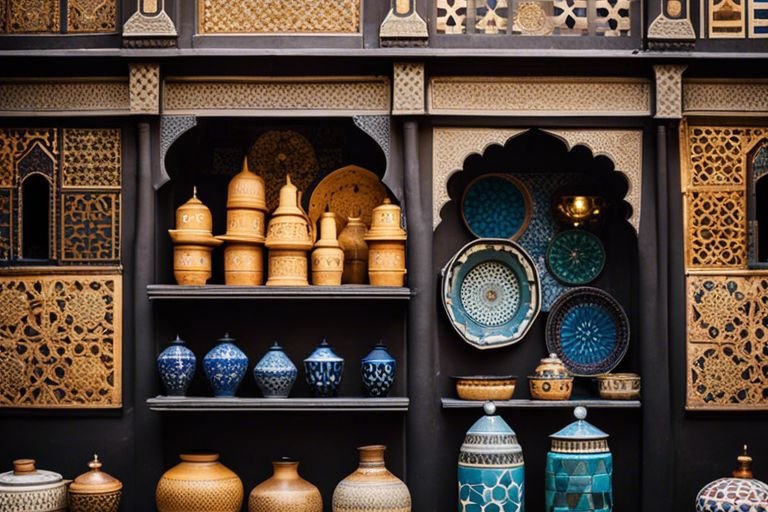
Everyday Life in Fes El-Bali
The Life of Inhabitants
After exploring the historical and architectural wonders of Fes El-Bali, it is essential to research the daily life of its inhabitants. An intricate network of narrow alleyways, bustling markets, and traditional houses define the people’s daily routine in this ancient medina.
An essential aspect of the inhabitants’ lives in Fes El-Bali is the close-knit community relationships that form the social fabric. Families often live in interconnected homes, sharing meals and traditions passed down through generations. The rhythm of daily life is punctuated by the call to prayer echoing from the mosque, signaling moments of communal worship and reflection.
The Role of Community and Social Institutions
Any understanding of everyday life in Fes El-Bali must acknowledge the central role of community and social institutions. Community communal spaces such as public fountains and mosques strengthen close ties within neighborhoods, where residents gather for religious and social purposes. Traditional hammams, or public bathhouses, offer a space for cleansing rituals and social interaction.
Also, local associations and cooperatives are crucial in preserving cultural practices and supporting the community’s economic well-being. These institutions organize events, provide services, and uphold traditions that have sustained the social cohesion of Fes El-Bali for centuries.
Tourism in Fes El-Bali
Your journey through Fes El-Bali will undoubtedly be enriched by the bustling tourism scene developed in this historic medina. As you step into this ancient labyrinthine city, you will immerse yourself in a world of sights, sounds, and smells that tell the story of centuries past. Navigating the narrow alleys and vibrant markets can be a thrilling adventure for visitors seeking an authentic Moroccan experience.
Navigating the Labyrinthine Alleys
Alleys in Fes El-Bali may seem like a maze initially, but each turn reveals hidden treasures waiting to be explored. From the iconic blue gate of Bab Bou Jeloud to the intricate mosaics of the Bou Inania Madrasa, every corner of this medina holds a piece of history. Embrace the chaos of the narrow streets and allow yourself to get lost in the enchanting world of Fes El-Bali.
Maintaining the Balance Between Tourism and Preservation
A delicate balance must be maintained Between the growing number of visitors flocking to Fes El-Bali and the need to preserve its historic architecture. The medina’s UNESCO World Heritage status adds a layer of responsibility to ensure that the unique character of this ancient city is not lost amidst the influx of tourists.
Preservation efforts in Fes El-Bali include strict regulations on architectural modifications and initiatives to educate locals and visitors on the importance of safeguarding the medina’s cultural heritage. By respecting the traditions and history of Fes El-Bali, tourists can contribute to the sustainability of this remarkable destination for generations to come.
Comparative Analysis with Other Historical Cities
Unlike many other historical cities worldwide, Fes El-Bali holds a unique position as one of the best-preserved medieval cities. Its ancient labyrinthine streets, traditional architecture, and vibrant cultural heritage set it apart from other urban centers undergoing significant modernization.
| Fes El-Bali, Morocco | Other Historical Cities |
| Fes El-Bali has retained much of its original layout and character. | Many historical cities have been heavily influenced by modernization and urban development. |
| The traditional craftsmanship and artisanal practices in Fes El-Bali are still thriving. | Some historical cities have seen a decline in traditional crafts and cultural practices. |
Similarities and Differences in Development
Historical cities like Fes El-Bali face a common challenge of balancing modernization with the preservation of their unique heritage. While some towns opt for extensive renovations and infrastructure upgrades to attract tourism and economic growth, Fes El-Bali has managed to maintain its authenticity by carefully monitoring development projects and strictly enforcing preservation regulations.
Fes El-Bali has successfully balanced modern advancements and historical conservation despite the pressure to adapt to contemporary needs. This delicate equilibrium sets it apart from many other historical cities that have struggled to preserve their cultural identity in the face of rapid urbanization.
Lessons Learned from Other Preservation Experiences
Development in historical cities can be a double-edged sword, offering economic opportunities while posing a risk to cultural heritage. Fes El-Bali is a prime example of how meticulous planning, community engagement, and governmental support can create a sustainable model for preserving the past while paving the way for a prosperous future.
With a focus on sustainable tourism, heritage conservation, and community empowerment, Fes El-Bali serves as a role model for other historical cities seeking to navigate the complexities of development in the modern age. By learning from Fes El-Bali’s experiences, city planners and conservationists can strive to safeguard the rich history and cultural legacy of their urban environments.
Fes El-Bali: The Journey Through Time
Keep yourself immersed in the rich history of Fes El-Bali as we take you on a journey through time, uncovering the layers of culture, architecture, and tradition that define this ancient city.
From The Idrisid Dynasty to the Present Day
One of the world’s oldest continuously inhabited medieval cities, Fes El-Bali was founded in the 9th century by the Idrisid Dynasty. Over the centuries, it has become a bustling hub of commerce, culture, and religious learning. The city has witnessed the rise and fall of dynasties, the flourishing of art and architecture, and the preservation of ancient traditions.
Today, Fes El-Bali is a UNESCO World Heritage Site, cherished for its maze-like streets, intricate mosaics, and historical monuments. Visitors can explore the medina’s ancient madrasas, mosques, and souks, getting a glimpse into the city’s storied past and vibrant present.
The Evolution of Urban Development in Fes El-Bali
On the journey through Fes El-Bali’s history, one can trace the evolution of the city’s urban development. From the medina’s narrow alleys to the grand gates and palaces, each architectural marvel tells a story of craftsmanship, innovation, and cultural exchange.
Fes El-Bali has adapted to changing times with each passing era while staying true to its roots. The medina’s layout, with its intricate network of streets and squares, reflects centuries of urban planning and architectural ingenuity. This ancient city inspires visitors with its timeless beauty and enduring legacy.
To wrap up
With these considerations in mind, it is clear that Fes El-Bali is not just a mere city but a historical masterpiece that dates back over a thousand years. This ancient city was built in the 9th century and has since stood the test of time, preserving its rich cultural heritage and architectural marvels for visitors to explore and admire.
When traversing the narrow alleys and bustling souks of Fes El-Bali, one cannot help but be transported back to an era of grandeur and sophistication. From the intricate tile work of the Medersa Bou Inania to the imposing gates of the Royal Palace, every corner of this UNESCO World Heritage site exudes a sense of history and tradition.
So, the next time you find yourself in Morocco, be sure to make a stop in Fes El-Bali and immerse yourself in the sights and sounds of this ancient city. With its fascinating history and timeless beauty, Fes El-Bali is a destination that should not be missed.
FAQ
Q: What is Fes El-Bali?
A: Fes El-Bali, also known as Old Fes or Fes Medina, is the oldest walled part of the city of Fes in Morocco.
Q: When was Fes El-Bali built?
A: Fes El-Bali was founded in the 9th century, and its construction began in 808 AD by Idris I.
Q: What is the significance of Fes El-Bali?
A: Fes El-Bali is a UNESCO World Heritage site and is considered one of the most well-preserved medieval cities in the world.
Q: What are the main attractions in Fes El-Bali?
A: Some of the main attractions in Fes El-Bali include the Al-Qarawiyyin Mosque, Bou Inania Madrasa, Chouara Tannery, and the Bab Bou Jeloud Gate.
Q: Is Fes El-Bali still inhabited?
A: Yes, Fes El-Bali is still inhabited and has numerous residential homes, shops, markets, and religious sites.
Q: Can tourists visit Fes El-Bali?
A: Yes, tourists can visit Fes El-Bali and explore its narrow streets, bustling souks, and historic landmarks, but it is recommended that the local customs and traditions be respected.
Q: What should visitors know before going to Fes El-Bali?
A: Visitors to Fes El-Bali should be prepared for narrow and winding streets, uneven terrain, and crowded areas, so comfortable walking shoes and modest clothing are recommended.

